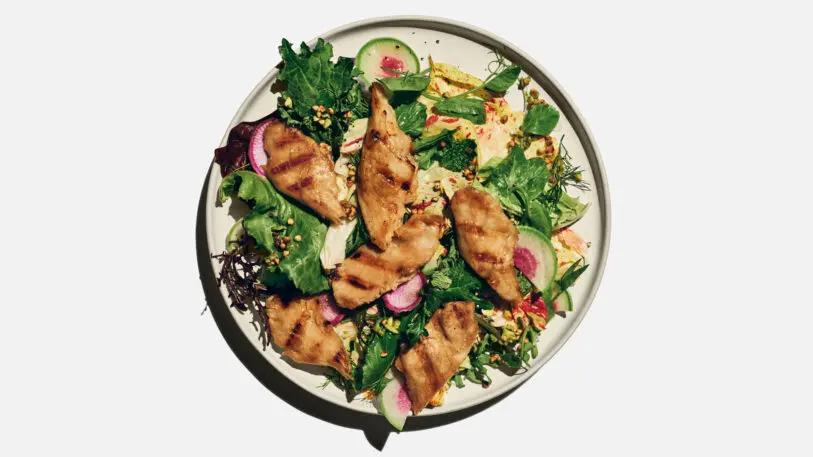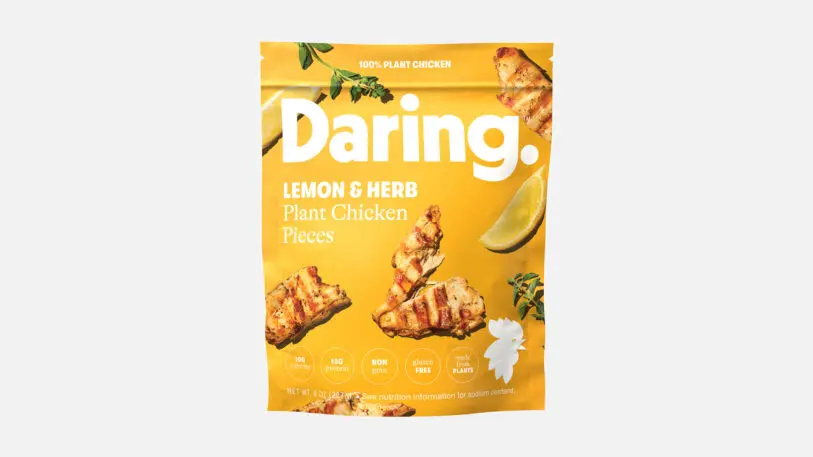The first time I cooked Daring’s plant-based chicken pieces, I was freaked out. I’d let the product samples sit in their colorful little pouches in my freezer for about a month before I was brave enough to cook them. Chicken was what made me stop eating meat in the first place. One morning, I walked by a fresh-kill butchery and saw a flock of chickens in their cages, patiently awaiting their fate. I haven’t touched meat since. (Though I do break for fish once or twice a month. I live in New England. It’s practically the law.)

- It’s squishy.
- It’s breaded and fried.
- It’s sort of nebulously textured.
- It’s that pink leftover goo that nearly broke Jamie Oliver on national TV.
But Daring’s “chicken” comes in unbreaded pieces, like pre-cooked grilled strips. They do sell a breaded, tender-type product, but the brand’s real appeal—and prowess—is in the form of pre-seasoned, plain strips that cook up and shred like real chicken.

Daring’s pieces are easy enough to cook with. Throw the strips into a pan over medium heat with a bit of oil, and let them sizzle. Unlike the uniformity of nuggets, they’re slightly varying sizes, as though you chopped up a chicken breast or thigh into strips. They quickly brown and get crispy at the edges. They sizzle and get a satisfying sear. They smell like chicken. The experience could be alarming for someone who hasn’t eaten meat in a long time. Which probably only adds to their appeal.

With 14g of protein per serving, Daring’s strips give a more flavorful protein heft to a salad that cans of chickpeas and cubes of tofu never quite delivered. They’re fantastic for fajitas or threaded onto skewers and brushed with sauce in a grill pan. My Daring pieces did not fare so well in soup; they turned slimy and unappealing. But for other meals, they are quick, low in fat, and oh-so-chicken-like. And for some non-meat-eaters, that might be a bit too much. If Impossible’s “heme”—the plant-based “bleed” that gives the protein an iron-like flavor and the ability to ooze red juices—grosses you out, these might, too, as they’re almost too real. But, for others, that might be a good thing.
Fast Company‘s Recommender section is dedicated to surfacing innovative products, services, and brands that are changing how we live and work. Every item that we write about is independently selected by our editors and, whenever possible, tested and reviewed. Fast Company may receive revenue from some links in our stories; however, all selections are based on our editorial judgment.
Recognize your brand’s excellence by applying to this year’s Brands That Matter Awards before the early-rate deadline, May 3.
